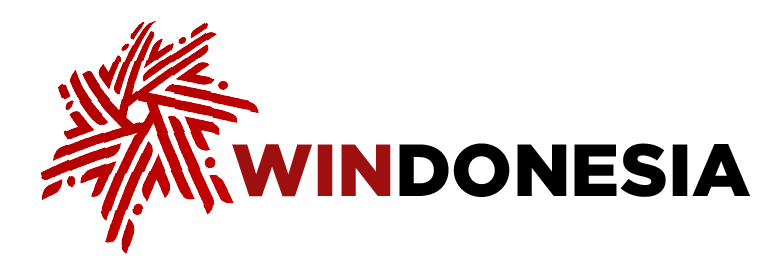News
Danantara’s test case in rescuing bleeding SOEs through cross-subsidy
Tenggara Strategics June 17, 2025 A Garuda Indonesia airplane parks at Terminal 3 of Soekarno-Hatta International Airport in Tangerang, Banten, on June 25. National flag carrier Garuda Indonesia is set to launch chartered flights to five cities in China, starting this month until March. (JP/Wienda Parwitasari)
A Garuda Indonesia airplane parks at Terminal 3 of Soekarno-Hatta International Airport in Tangerang, Banten, on June 25. National flag carrier Garuda Indonesia is set to launch chartered flights to five cities in China, starting this month until March. (JP/Wienda Parwitasari)
Danantara has little choice but to rescue financially bleeding state-owned enterprises (SOEs) by channeling dividends from profitable SOEs, as government funds are no longer permitted for such purposes. The market has responded positively to the planned rescue of near-collapse SOEs, though some have warned Danantara of the potential risk of wasting valuable investment capital.
Among these struggling SOEs, Danantara has shown a strong commitment to saving publicly listed flag carrier Garuda Indonesia, pledging to inject US$500 million into the airline. Garuda CEO Wamildan Tsani intends to allocate the funding to procure 15 aircraft. Following the rescue announcement, Garuda’s stock (GIAA) surged by 87.18 percent over the past three months, reflecting market optimism.
Danantara has also outlined plans to invest in vaccine development as part of efforts to revive Bio Farma, the troubled health-sector holding company. The stock price of its publicly listed subsidiary, Kimia Farma (KAEF), has increased by 22 percent in the past three months. Bio Farma has requested fresh funding amounting to Rp 2.21 trillion (US$138 million) to support vaccine production.
Other ailing SOEs on Danantara’s radar include publicly listed construction companies PT Wijaya Karya (WIKA) and PT Waskita Karya (WSKT), both of which remain suspended from trading on the Indonesian Stock Exchange.
Before Danantara’s establishment, the SOEs Ministry had planned to merge Wijaya Karya with fellow listed construction SOE Pembangunan Perumahan (PTPP), and Waskita Karya with another SOE, Hutama Karya, as part of a government-led recovery strategy. However, under Danantara’s leadership, those merger plans are now under review and possibly aborted.
These financially troubled SOEs remain in deep distress. Garuda Indonesia, for instance, has not fully recovered, even after a major debt restructuring and a Rp 7.5 trillion government capital injection in 2022. While Garuda posted a net profit of $251.9 million in 2023, it returned to a net loss of $69 million in 2024 and further reported a net loss of $75 million in the first quarter of 2025.
Garuda’s Q1 loss came despite revenue rebounding to its pre-COVID-19 level, reaching $723 million, comparable to $768 million recorded in Q1 2020. However, soaring operational costs, particularly maintenance expenses, outpaced revenue gains. Maintenance costs rose from 13 percent of operating expenses in Q1 2023 to 21.7 percent in Q1 2025, driven primarily by higher spare part costs. These increases stem from steep import duties, averaging 37.9 percent, significantly higher than Malaysia’s 14 percent and Singapore’s zero percent.
Furthermore, due to Garuda’s fragile financial state, all spare part suppliers now require upfront payments, exacerbating the airline’s cash flow challenges and forcing the temporary grounding of 15 Citilink aircraft.
Garuda’s current plight is also a legacy of past misconduct, including corruption and bribery involving former CEO Emirsyah Satar. These practices saddled the airline with inflated leasing costs, the highest among global carriers.
Similarly, both Wijaya Karya and Waskita Karya have continued to incur heavy losses through 2025. In Q1, Wijaya Karya and Waskita Karya reported net losses of Rp 783 billion and Rp 1.3 trillion, respectively. A significant drop in public works orders has worsened the outlook for construction SOEs, following a government budget cut from Rp 181 trillion to Rp 73.76 trillion this year.
The downfall of these construction firms has already affected numerous suppliers due to delayed payments, raising fears of mass layoffs in the labor-intensive construction industry.
Meanwhile, Bio Farma appears to be on a recovery path, reporting a net profit of Rp 380 billion in Q1 2025 after recording a full-year loss of Rp 1.16 trillion in 2024. However, legislator Nasril Bahar from the House of Representatives’ Commission VI, which oversees SOEs, has raised concerns over possible financial engineering, noting Bio Farma’s consistent losses since 2023. The company has also been entangled in several scandals, including an online loan fraud involving one of its executives.
While the rescue initiatives have been widely anticipated and welcomed, experts emphasize that investment plans must be backed by clear corporate strategies to ensure profitability and generate returns for Danantara. The history of weak governance and fraud at many SOEs demands strong oversight and accountability moving forward.
What we've heard
A source revealed that the capital injection from Danantara to Garuda Indonesia came from President Prabowo Subianto’s desire to save the national airline. According to this source, Prabowo is determined that the flag carrier cannot be allowed go under and even wants Garuda to start revitalizing its fleet.

